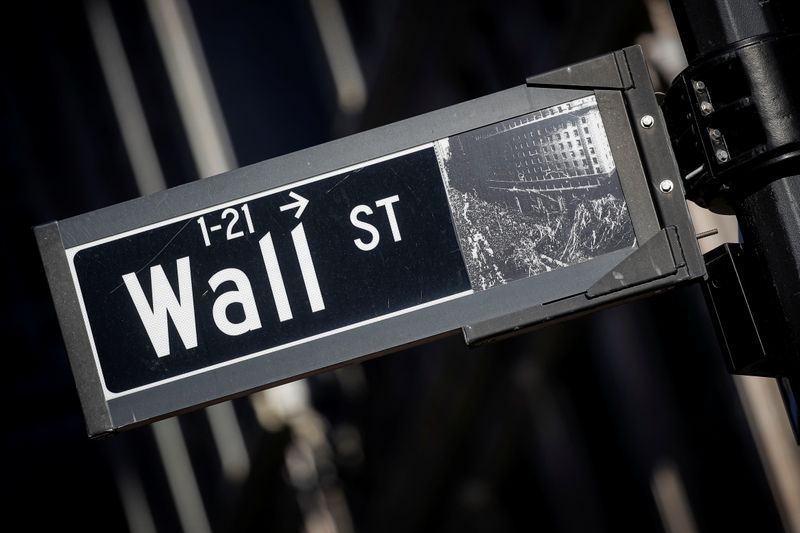Investing.com-- The S&P 500 closed lower Wednesday after swinging between gains and losses as the Federal Reserve kept rates unchanged on Wednesday, but the central bank maintained its easing basis, downplaying the prospect of rate hikes.
At 16:00 ET (20:00 GMT), S&P 500 fell 0.40%, the NASDAQ Composite fell 0.3%, and the Dow Jones Industrial Average climbed 85 points, or 0.2%.
Fed leaves rates unchanged, downplays hikes
The Federal Reserve left interest rates unchanged within a 5.25% to 5.5% range, and signaled that rates could likely remain higher for longer than previously expected, but kept the rate hikes off the table.
"it is unlikely that next policy rate move would be a hike," Fed chairman Jerome Powell said Wednesday, though acknowledged that progress on inflation had stalled in recent months.
The Fed's approach to "dealing with excess inflation pressure has been to rely on the 'higher for longer' strategy for interest rates," Jefferies said. "Nothing from today's communication suggests that is going to change any time soon," it added.
The decision arrived on the heels of data showing the labor market is coming into the balance as job openings fell to a three-low in March. On the private labor market front, however, job gains in April topped economists expectations.
The nonfarm payrolls report is due on Friday, which is expected to show that the U.S. economy added a healthy 243,000 jobs in April.
Amazon a bright spot as tech in violent swing
Amazon (NASDAQ:AMZN) stock rose 2% as tech giant's solid first-quarter earnings beat estimates underscoring the boost to its cloud business from AI demand overshadowed a revenue forecast that fell short of estimates.
Chip stocks were a drag on the broader tech sector following 14% slide in Super Micro Computer Inc (NASDAQ:SMCI) and a 8% slide in Advanced Micro Devices (NASDAQ:AMD).
AMD reported quarterly results that topped es after the chipmaker said it expects AI chip sales of roughly $4 billion for 2024, an increase of $500 million from its prior estimate for the year. However, this was not enough to meet Wall Street's lofty expectations.
Kraft Heinz, Yum! Brands, Estee Lauder, Starbucks falter on earnings stage; Pfizer shines
Kraft Heinz (NASDAQ:KHC) stock fell 6% after the food giant missed expectations for first-quarter sales, as inflation-weary consumers pushed back on higher prices of its products.
Yum! Brands (NYSE:YUM) stock fell 4% after the restaurant group reported a surprise fall in quarterly global same-store sales, hurt by choppy demand for its KFC and Pizza Hut brands from inflation-weary consumers.
Estee Lauder (NYSE:EL) stock fell 13% after the beauty products company as its earnings and revenue topped consensus expectations, but guidance fell short of consensus estimates, while CVS Health (NYSE:CVS) stock slumped 18% after the pharmacy chain reported a decline in first-quarter profits and slashed its full-year earnings outlook.
Coffee chain Starbucks Corporation (NASDAQ:SBUX) tumbled more than 16% after its first quarter profit missed expectations, while its revenue weakened on worsening demand in North America and China.
Pfizer (NYSE:PFE) stock rose 6%, however, after the drugmaker topped first-quarter expectations, and boosted its full-year outlook.
Energy stocks pressured by falling oil prices after US stockpiles build
Energy stocks including Diamondback Energy Inc (NASDAQ:FANG), Occidental Petroleum Corporation (NYSE:OXY), and EQT Corporation (NYSE:EQT) were under pressure from a more than 3% slip in oil prices after a surprise build in U.S. stockpiles and strong crude production sparked doubts over tight supply conditions.
The Energy Information Administration reported that weekly U.S. inventories for the week ended Apr. 26, jumped by 7.3M (NYSE:MMM) barrels, confounding expectations for a draw of 2.3M barrels.
Energy stocks, however, are up about 10% for the year, and will likely extend gains as oil major continue to boast healthier balance sheets.
"Most of these oil companies are free cash flow, positive generative, above $40 a barrel, so there's a lot of margin of error between being free cash flow positive versus not," with current prices in the $70 and $80 a barrel range, Chris Barto, Investment Analyst at said in an interview with Investing.com's Yasin Ebrahim on Wednesday.
"As long as capital expenditures remain relatively stable, and they're not consistently drilling for new oil, we think that if you're an investor and you're looking for cash flow, stability and dividends, energy is a good place to be," Barto added.
(Peter Nurse, Ambar Warrick contributed to this article.)
